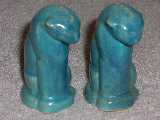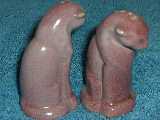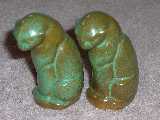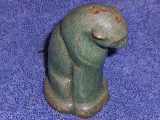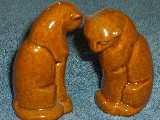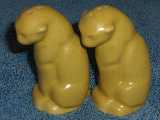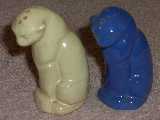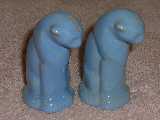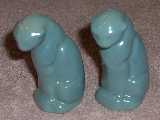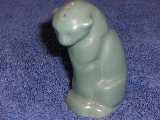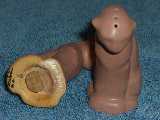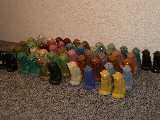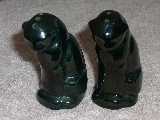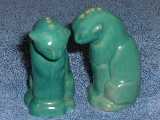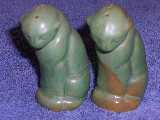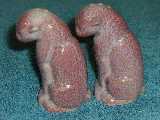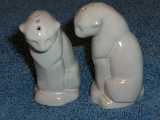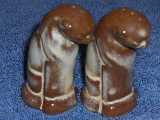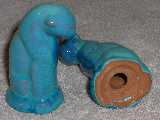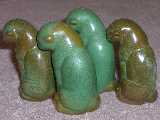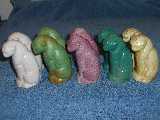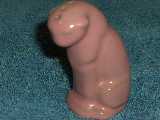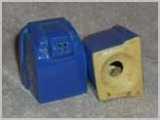

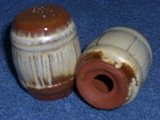
Cat Shakers #165H: 1942-1957
According to standard texts production of the #167H Cat shakers started in 1942 and continued until 1957. A break in production occured, however, from around 1944 until 1950. When the cats reappeared in the 1950 catalog with the new mold number #165H Frankoma was actually re-issuing the shape.
The collector will thus find cats not only in both Ada clay and the brick red early Sapulpa clay but also in a large and small size. The original issues of 1942-1944 are small, just 3" in height. When they re-appear in 1950 the cats are 3 1/4" in height. Then the Sapulpa red clay returns the cats to their original smaller size. For my purposes here I will separate the types by size and clay type.
The cats appear in many glazes but the majority are glazed prairie green. They are especially rare in the late Norman glazes (royal blue, ivory) and some 1942 glazes (sky blue, dusty rose). Also, it comes as a surprise to most that cats are rare in any glaze on the red Sapulpa clay.
You will find these labeled “cougars,” “pumas”, “panthers”, and “mountain lions.” The Frankoma catalogs refer to them simply as “cats.” Damage to the ear tips is common so be sure to feel those ear points when assessing a piece. Mold quality and glaze thickness vary substantially on these. Sometimes the glaze is so thin the ear tips will be rough even if not damaged. Mold definition varies from sharp with a new mold and a thin glaze to very low definition with a worn mold and thick glaze. The lack of definition does not seem to make them less desirable. It is just something to pay attention to when putting together a collection.
Collecting the cats is an expensive proposition. People love this cute design and although made over a 15 year period the cats can often cost as much as the rarer elephants and bulls.
